
What's New In Speak - April 2024
Interested in What's New In Speak February 2024? Check out this post for all the new updates available for you in Speak today!
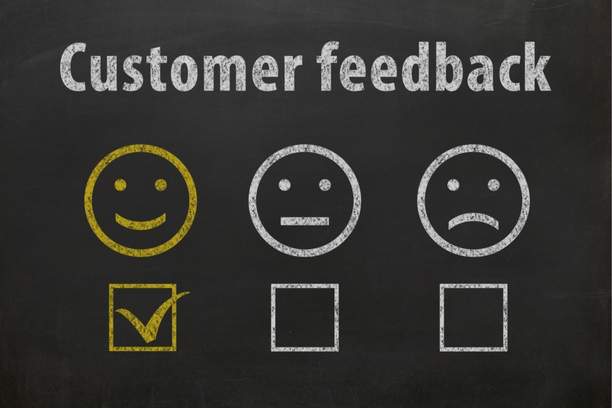
Customer feedback is a crucial part of any business. While it's true that quantitative customer feedback is an important part of any business, it's not the only thing you should be focusing on. When you're listening to your customers, you're not just trying to figure out how many people like what you do—you're also trying to learn about what they think, and why they think it. That's where qualitative customer feedback comes in.
As a business, you want to know what your customers are thinking so that you can make a better product or service. You want to know what they like and don't like, and how they use your product or service. You want to know if they think your pricing is fair, or if they would be willing to pay more for something else.
That's why it's important to gather qualitative customer feedback—instead of only gathering quantitative data (such as sales numbers), qualitative feedback gives you insight into what your customers think about your business and its products/services.
Qualitative feedback is a specific type of feedback that describes why a customer is happy or unhappy. This type of feedback is often qualitative because it's usually not measurable. Quantitative feedback is more objective and less subjective, and it describes what you do well and what needs to be improved.
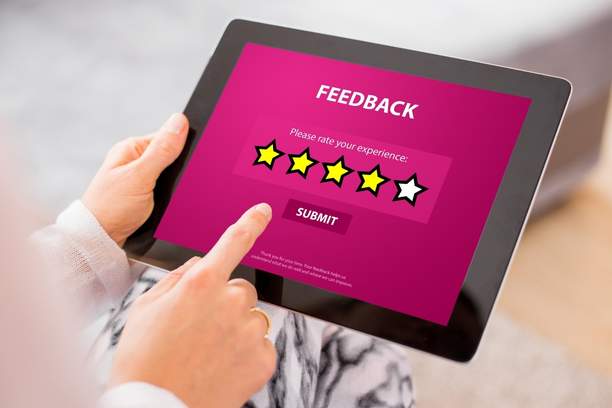
Qualitative customer feedback is a way of collecting opinions from your customers, who are asked specific questions about their experience. The answers are then analyzed and categorized to help you understand how you can improve your product or service.
Qualitative customer feedback can take many forms, such as surveys, interviews, focus groups, and more. In general, qualitative customer feedback is less quantitative than quantitative data. For example, if you ask 100 customers to rate their satisfaction on a scale of 1-5, their scores will be quantifiable but it won't give you any insight into why they gave those ratings. Qualitative customer feedback helps you understand what's behind that score so that you can make changes based on actual needs rather than just numbers alone.
Qualitative data collection can help you:
Customer feedback is a key element in measuring the success of your business. It can help you understand what your customers like, what they don’t like, and how they feel about different aspects of your business.
There are many ways to collect feedback from customers, but the most popular methods are NPS (Net Promoter Score), CSAT (Customer Satisfaction), and CES (Customer Effort Score).

The Net Promoter Score, often known as NPS, is a metric that evaluates the whole connection you have with your clients.
The Customer Satisfaction Score, often known as the CSAT, provides insight into a client's level of contentment with either a particular encounter or their overall experience with your business.
The Customer Effort Score, also known as CES, is a metric that determines how easy (or difficult) it is for customers to interact with a particular business.
You may learn a lot about your client's satisfaction with their interactions with your brand using either of these three indicators. What consumers say about your company might pertain to their overall impression of your brand or their experience with certain touchpoints throughout the customer journey.
Qualitative data collection is one of the best ways to understand what your customers think and feel about your business—and why they act in certain ways. It allows you to dig deeper into customer behaviors and attitudes toward your brand and products.
Here's how you can start with qualitative data collection:
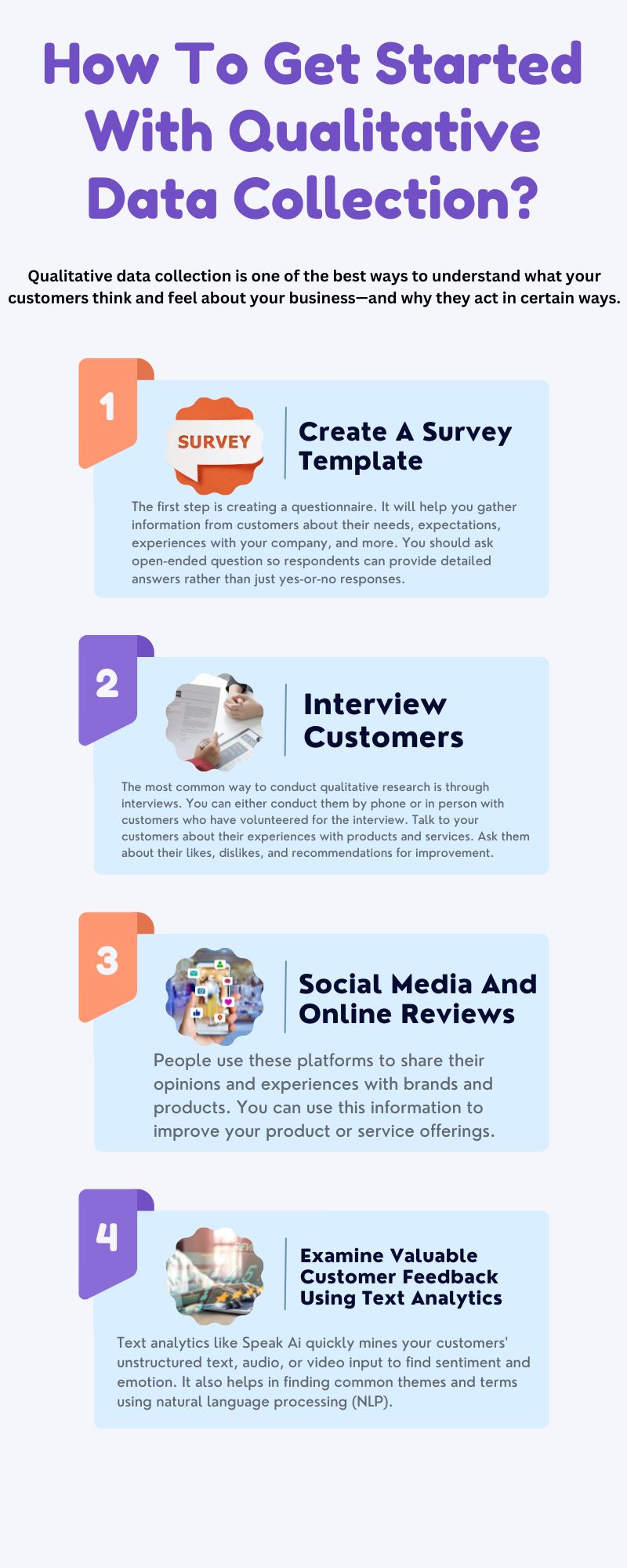
The first step is creating a questionnaire. It will help you gather information from customers about their needs, expectations, experiences with your company, and more. You should ask open-ended question so respondents can provide detailed answers rather than just yes-or-no responses. Ask follow-up questions to get more information from each respondent. For example, if someone says they're dissatisfied with an aspect of your business or product line, ask them what would make them happy.
The most common way to conduct qualitative research is through interviews. You can either conduct them by phone or in person with customers who have volunteered for the interview.
Talk to your customers about their experiences with products and services. Ask them about their likes, dislikes, and recommendations for improvement. You can use an interview guide to keep your questions organized and focused on the topic at hand (e.g., “What were some of the main reasons why you decided to purchase our product/service?”).
People use these platforms to share their opinions and experiences with brands and products. You can use this information to improve your product or service offerings. Analysis of this type can help you fine-tune your customer service and provide a better experience for your patrons.
Text analytics like Speak Ai quickly mines your customers' unstructured text, audio, or video input to find sentiment and emotion. It also helps in finding common themes and terms using natural language processing (NLP). Word clouds are used to represent data, with color indicating mood and size indicating frequency to better visualize and synthesize qualitative data.
The benefits of qualitative feedback are numerous:
While qualitative data may be more useful in certain situations than quantitative data, it has some limitations that should be considered:
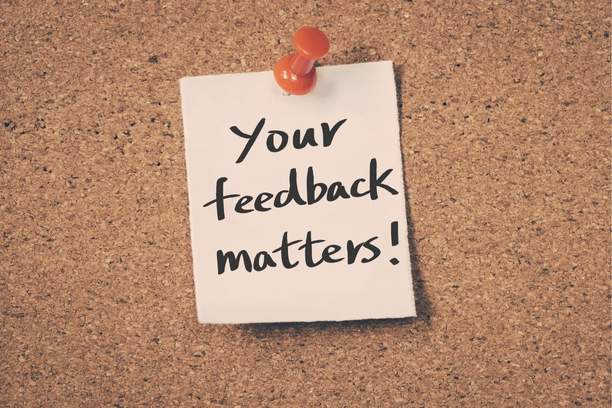
Qualitative customer feedback is as important as quantitative feedback, but it's often overlooked.
Qualitative customer feedback allows you to understand the motivation behind your customers' behaviors. It also helps you identify and prioritize problems that need to be fixed.
The problem is that qualitative data is harder to collect than quantitative data. Therefore, many businesses don't take advantage of it. One solution to this challenge is Speak Ai. It provides an easy way for you to collect both qualitative and quantitative feedback from your customers.
Since there are now user-friendly text analysis tools like Speak Ai available, there is no longer any reason to ignore your qualitative responses.
Interested in learning more about how to analyze your qualitative data? 7,000+ people and teams have already started using Speak Ai to collect and analyze their qualitative customer feedback. Schedule a demo with us, or sign up for a trial of Speak Ai to test out our tools for yourself.
Get a 7-day fully-featured trial.


Interested in What's New In Speak February 2024? Check out this post for all the new updates available for you in Speak today!

Interested in What's New In Speak February 2024? Check out this post for all the new updates available for you in Speak today!
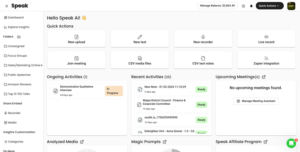
Interested in What's New In Speak February 2024? Check out this post for all the new updates available for you in Speak today!

Thank you for continuing to be part of this journey - it means the world to us. Below is a summary of our 2023 at
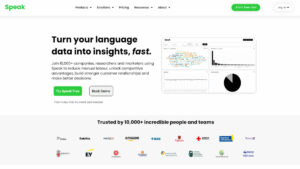
Interested in The Best Executive Research Firms? Check out the dedicated article the Speak Ai team put together on The Best Executive Research Firms to learn more.

Interested in The Best Consumer Research Firms? Check out the dedicated article the Speak Ai team put together on The Best Consumer Research Firms to learn more.

Powered by Speak Ai Inc. Made in Canada with
Use Speak's powerful AI to transcribe, analyze, automate and produce incredible insights for you and your team.